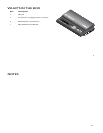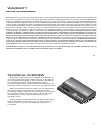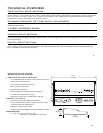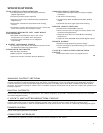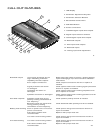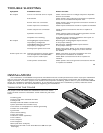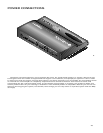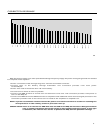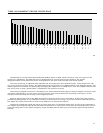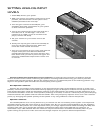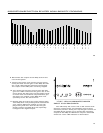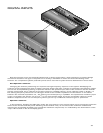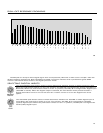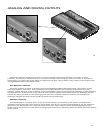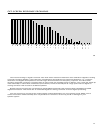
ANALOG INPUTS
Time alignment errors are caused by speakers that are located at different distances relative to the listening
position. Time alignment errors are difficult to detect only using an RTA. In some cases, time response errors can be
indicated by a shelving effect of a particular driver (in the above situation the tweeters) in such a way that the
response is smooth but appears to be disjointed from the adjacent drivers.
Non-Equalizer Solutions
This problem can be better identified by using a time delay device (usually digital) to delay the apparent louder
drivers. In the above situation, this would be the midrange. When using time alignment, first integrate the
midrange and tweeters then add the woofers. If you delay a set of drivers and the response does not change, then
the problem is not time related and you should employ methods discussed in “Output Level Incompatibility
Problems.”
Equalizer Solutions
Use the DEQ 30 first as a cut only device to try to smooth out the non-linearity of the system. Cut frequencies
gradually starting with the center point of the problem area. Do not cut the centered band to get the frequency
response to the flat position for it will dip below when you change adjacent bands. When boosting the DEQ 30 is
required, take care not to exceed the maximum undistorted output level of the DEQ 30. For reference, an
Illuminated “Clip” LED indicates that the maximum output level has been exceeded. Periodically listen to your
system during this process to make sure that the changes improve the system.
10
43
OUT
IN
COAX
DIGITAL
A
N
A
L
O
G
/
D
IG
ITA
L
TO
S/
C
O
A
X
TOSLINK
RCA
RCA
ANALOG OUTPUT
L
R
L
R
R
L
COM PORT
RESET
POWER
REM GND 12V
ANALOG INPUT
BALANCED
INPUT
ADJUST
L
R
LR
OEM Integration
with Balanced Inputs
Capacitor Value C1=100µF non-polar capacitor
Resistor Value R1= 20 to 100
Connect A & D to the chassis ground of the radio
Connect B to the left speaker positive
Connect C to the left speaker negative wire
Connect E to the right speaker positive
Connect F to the right speaker negative wire



